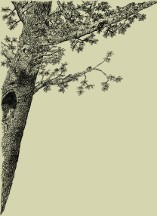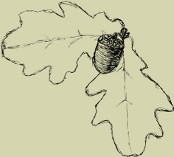42 41 40 39 38 37 36 35 34 33 32 31 30 29 28 27 26 25 24 23 22 21 20 19 18 17 16 15 14 13 12 11 10 9 8 7 6 5 4 3 2 1
Zeszyt 41 (2010)
The aim of this preliminary study was to investigate the possibility of detection and quantification of various monoterpenes emitted from wood by using Proton Transfer Reaction Mass Spectrometry; a novel procedure based on the collision-induced dissociation has been investigated. The energy of collision has been varying in a range of 80 Td to 180 Td with a step of 20 Td. Samples of Aleppo pine (Pinus halepensis) wood growing in France and Algeria have been measured and compared. The quantity of monoterpenes emitted from Algerian wood was much higher than from French. The most significant masses detected in both cases were m81 and m137. However, collision-induced dissociation patterns were slightly different, what suggests different composition of monoterpens in woods from France and Algeria.
Key words: PTR-MS, wood provenience, Aleppo pine, monoterpenes
The connections between some phenolic compounds occurring in wood of Betula pendula Roth. and trophic abilities of Piptoporus betulinus (Bull.) P. Karst.) were examined. 2-Furaldehyde, 2,6-Dimethoxyphenol, Vanillin, Anisic acid and Koniferol were used for artificial saturation of wooden samples based on vacuum method. Then the different samples were placed in the laboratory conditions on the mycelium of P. betulinus for 30, 60 and 90 days. The losses of their mass, compared with control samples impregnated only with distilled water, allowed to examine the true properties of tested substances. The experiment showed that all of them were able to stop the growth of the mycelium of P. betulinus. The most promising seemed to be Anisic acid and 2-Furaldehyde. The efficiency of their work was so obvious that there is a possibility to use them in the future for practical wood protection against decay caused by P. betulinus and maybe other species of fungi responsible for brown type of wood decomposition.
Key words: wood protection, Betula pendula, Piptoporus betulinus, 2-Furaldehyde, 2,6-Dimethoxyphenol, Vanillin, Anisic acid, Koniferol
The study determined the content of substances soluble in an organic solvent as well as hot and cold water of exotic woods: merbau, wenge, padouk and doussie. In addition, characteristics of these substances in UV and IR were presented.
Key words: exotic wood, soluble substances, UV, IR
The paper reports results of a study on variation in density, strength and modulus of elasticity in early and latewood of spruce (Picea abies L.) measured in microtome samples along the grains upon tensile stress application as a function of cambial age. The measurements permitted to calculate the specific values of tensile strength and modulus of elasticity. Analysis of these specific parameters provided information on the effect of changes in the wood cell walls determined by MFA on the mechanical properties of wood.
Key words: spruce wood, tensile strength, modulus of elasticity, specific strength, specific modulus of elasticity, MFA
The paper investigates the possibility of applying pulverized stems of Sida hermaphrodita Rusby as a substitute for wood particles in the process of producing single-layer particleboards glued with UF, MUPF and PMDI resins. The investigations were conducted at two stages. At the first stage, the effect of the level of substitution (0, 10, 25, 50, 75 and 100%) was determined for the basic properties, i.e. bending strength, modulus of elasticity and internal bond before and after the boil test (only for MUPF and PMDI), swelling in thickness and formaldehyde content (only for UF and MUPF). The obtained results led to the conclusion that it is possible to entirely substitute particles of Sida hermaphrodita Rusby for wood particles in the process of producing particleboards glued with the above-mentioned resins. Based on these conclusions, the other stage of investigations was implemented, i.e. an attempt was made to determine the optimum resin level for the boards made entirely from this material. The selected resin levels were 10, 12 and 14% for UF and MUPF resins and 6, 8, 10 and 12% for PMDI resin. The produced boards were subjected to the same tests as at the first stage. The achieved results prove that the boards can be produced even with the lowest resin levels, which were applied in the investigation.
Key words: particleboard, Sida hermaphrodita Rusby, substitution
Three months’ duration creep test was carried out on the composite I-beam of a span of 4.5 m, loaded at third point along the beam. The beam consisted of two 38 × 58 mm flanges made of pine wood and 10 mm thick OSB/3 web. The results of the bending creep test were approximated using the creep equations of three-, four- and five-element viscoelastic models.
Key words: composite I-beam, creep, viscoelasticity, creep model, bending, pine wood, OSB
The article compares rates of biodegradation of paper products with the addition of wheat and rye bran as well as with and without a fungicide (4,5-dichloro-2-octyl-2H-isothiazol-3-one, 3-iodoprop-2-ynyl-N-butylcarbamate). An axenic culture of Chaetomium globusum Kunze et Fr. and a mixture of microfungi (with Aspergillus niger van Tieghem, Trichoderma viride Persoon ex S.F. Gray aggr., Penicillium funiculosum Thom) were employed as a biotic agent. The resistance to the colonisation of sample surfaces by the mycelium of the test fungi was adopted as a biodegradation criterion and breaking strength after the mycological test was determined in accordance with the standard: PN-P-50405:1995 (IGT methods). Recycled papers supplemented with 3% wheat bran and with 5% rye bran exhibited the lowest resistance to the development of mycelium on the sample surface and break resistance. Paper products supplemented with 5% wheat bran were resistant to the biodegradation by all test fungi. The addition of 0.125% fungicide to the examined paper products resulted in the complete resistance against test microfungi. Nearly in all examined cases, the breaking strength was higher in the case of samples which contained wheat bran and 0.125% biocide (the difference amounted, on average, to about 7 N in favour of 0.125% concentration).
Key words: paper test sheets, paper stock, rye bran, wheat bran, microfungi, break resistance















 Pobierz PDF
Pobierz PDF